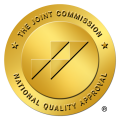Transgender Health Care
and Addiction Treatment
Article Contents
Effectively treating the transgender community requires compassion, understanding, and education. Today, there are options for proving quality transgender health care and addiction treatment. But to do so effectively, it is important to first understand the community to be served.
What is Transgender?</
The transgender community has, in many ways, joined the mainstream society. The term “transgender” is used more commonly today over “transexual.” Transgender science looks at whether there are biological causes of transgenderism or why one individual becomes a transgender.1
Transgender vs. Transexual
Transgender is a catch-all term that refers to an individual who is born one gender but chooses to live as another. Such individuals feel they were born the wrong gender and that they were meant to be the opposite gender. The term “transgender” may also include cross-dressers, drag-queens, and androgynous individuals if they choose.
Transexual is an older term still used today by professionals to refer to individuals who undergo gender/sexual reassignment surgery and hormone therapy. Transsexualism is seen as more psychopathological than transgenderism.1
Transgender Health Care
Transgender individuals have specific health care needs that an addiction treatment facility may not be prepared to address. Understanding the special needs of this community is the first step and being able to address these needs is the second step. Addiction treatment programs can be improved by partnering with an appropriate provider.
Awareness of the difference between transgender vs. transexual is necessary for understanding the need for specialized health care. Just like everyone else, individuals who are transgender need to feel comfortable when they go to see a doctor.
Substance Use Rates for the LGBTQ+ Community
Tobacco
Transgender adults have higher smoking rates compared to the general adult population. These rates include e-cigarettes and vaping. Both transgender women and men are more likely to have tried vaping than their heterosexual counterparts. They are also more likely to begin smoking at a younger age and developing a nicotine addiction sooner than the general population.2Alcohol
Compared to the general adult population, transgender adults have a significantly higher alcohol use rate of nearly 12.5% compared to approximately 10% of the general population. Alcohol use also begins earlier in the transgender community than in the general population, meaning alcohol addiction occurs at earlier ages.2Drugs
Transgender adults have a much higher drug use rate compared to adults in the general population. Almost 40% of the adult transgender community report using marijuana in the past 12 months compared to about 16% of adults overall. Approximately 9% of the adult transgender population report opioid use (including heroin) compared to less than 4% of the general adult population.2
Substance abuse rates in the transgender community remain disproportionately high. Understanding the reasons for it can help health care professionals and other experts develop the proper approaches and treatment methods.
Why Transgender Substance Use Rates Are So High
Several reasons stand out why the transgender community is at higher risk for substance use and addiction.3
Discrimination and Stress
Dealing with prejudice, disapproval, and bias is an everyday occurrence for transgender individuals. The resulting stress often leads to depression and a need to avoid society. In turn, this depressive state can lead to suicide. While the actual transgender suicide rate is unknown, experts believe at least 40% of adult transgender individuals have attempted suicide because of discrimination, stress, violence, and lack of acceptance.3
Lack of Cultural Competency in Health Care
Cultural Competency in Transgender Health Care
The need for culturally competent health care has never been greater. The transgender community requires health care that will take into consideration the various issues facing this population.
There is a rising need for health care providers to be aware of clinical issues in the transgender community, as there simply are not enough health care workers who understand this matter. Certain questions need to be asked and no assumptions can be made. All care must be performed sensitively.
There is also a need to eliminate discrimination in health care because discrimination does exist in the health care system. Judgment and bias can undermine any care a health professional may provide for someone. A health care professional must be willing to treat everyone the same, including transgender individuals. Transgender individuals will only trust health care professionals who are willing to listen to them and treat them without bias, and addiction treatment cannot occur without trust.4
Clinical Issues in Transgender Health Care
Establishing health care to meet the needs of transgender individuals must take into consideration the following clinical issues:
High Rates of Personal Violence and Trauma
Several studies suggest the rate of personal violence in the transgender community can be as high as 50%. Sexual abuse against transgender women and transgender men is also much higher than in the general population.5
Internalized Transphobia
Just because an individual identifies as transgender does not mean they are comfortable with it. The individual may have internalized the public’s condemnation or prejudice toward the transgender community. In this situation, the transgender individual may hate being transgender and develop additional issues as a result.
Low self-esteem
Many individuals in the transgender community suffer from low self-esteem. They have been made to feel different or strange, and they may believe there is something wrong with themselves. Their confidence is low because of the lack of family and community support for the transgender community. Discrimination and lack of acceptance can lead to anxiety, depression, and low self-esteem.
Distrust in the health care system
The transgender community has learned to distrust traditional health care because the system tells them they are wrong. Transgender women and transgender men often must advocate for themselves to not only get insurance providers’ approval but also to find physicians who will perform gender reassignment procedures. It is not uncommon for medical doctors to refer transgender individuals for psychiatric evaluation, believing they can be “fixed”.
Hormone Therapy Interaction with Drug Use
It is common for transgender women and transgender men to take hormone therapy to help with their transition. Without proper information from health care professionals, transgender individuals who are using hormone therapy may also use illicit drugs without knowing negative interactions and side effects.
HIV Rates
Both transgender women and transgender men have high HIV rates compared to the general population. Rates are higher in transgender women at approximately 14% and 3.2% in transgender men. In comparison, the HIV rate is less than 0.5% in the general adult population.5
Understanding these clinical issues helps health care professionals provide appropriate services to transgender individuals. Transgender individuals who complete drug treatment reduce the risk of contracting HIV. The transgender suicide rate may also decrease with access to improved health care.
SAMHSA Recommendations for Transgender Health Care Providers
Through the U.S. government’s Substance Abuse and Mental Health Services Administration (SAMHSA), a branch of the Department of Health and Human Services (HHS), specific recommendations prepare transgender health care providers for the best patient outcomes. These recommendations are intended to help providers demonstrate competency in transgender health care.6
Use a Counseling Competencies Model
A structured model for counseling ensures improved patient care. A provider can check if specific competencies exist in their agency, if they need to be improved, or if they are sufficient. These models can include:
- Understanding substance use disorders (SUDs): Increases knowledge base of addictive behavior and corresponding SUDs along with trends in the transgender community.
- Knowledge of treatment approaches: Provides various ways to treat transgender patients in a caring environment.
- Application to practice: Prepares health care professionals to take what they have learned and put it into practice with patients.
- Professional readiness: Evaluates their readiness to begin seeing and treating patients. Professional readiness includes bias assessments, knowledge evaluations, and communication critiques.
Promote LGBTQ+ Care in Mission Statements and Policies
An excellent way to publicly demonstrate a facility’s commitment to caring for the LGBTQ+ community is to explicitly state so in policies, mission statements, and marketing materials. A facility can promote transgender health care through social media or their website.
Promote LGBTQ+ Care in Training
All health care providers are required to provide ongoing training for their staff. SAMHSA recommends incorporating LGBTQ+ care in training as a special needs group. Training should include active listening, understanding the LGBTQ+ language and lingo, and typical transgender health care issues.
Add LGBTQ+ Focused Care to Quality Improvement Initiatives
All health care programs must complete ongoing accreditation and other credentials. During these processes, it is simple to add LGBTQ+ focused care initiatives to proposed quality improvement outcomes. A facility has time to thoughtfully plan and implement the best approach to address gaps in LGBTQ+ services.
Build Alliances and Networks
Another recommendation involves outreach to professional and community partners. Specific groups to partner with include local LGBTQ+ advocacy groups, community centers, mental health agencies, and peer support groups.
Following these recommendations is a sound approach for health care providers wanting to serve transgender individuals. However, it may not be reasonable for addiction treatment facilities to also provide health care for their transgender patients.
If the SAMHSA Recommendations Seem Daunting, Outsource Transgender Health Care Treatment for Addiction
It is common for official guidelines to seem complicated, even to professionals. Federal recommendations may not be appropriate for every addiction facility.
Partner with Someone Who Has Already Established the Best Possible Transgender Health Care
Rather than spending time and money to create transgender health care at a facility, consider partnering with an expert who has already put the effort into developing the best care possible for transgender patients. See what services they offer and compare those services against the needs of facility patients.
Avoid Spending Inefficiencies on A Small Transgender Patient Base
This outsourcing approach is particularly effective if a facility only sees a few transgender patients at a time. By partnering with another provider, a facility can offer value-added services to transgender patients without taking on a burdensome transgender health care system that only a few individuals would use. A cost-benefit analysis shows this approach is the best one for all facility patients.
Provide Better Patient Outcomes with Expert Partners Trained to Treat Transgender Patients
By better understanding the needs of transgender women and men, a treatment facility can expect improved transgender health care outcomes. Partnering with trained experts to provide this care ensures that transgender patients receive the highest quality transgender health care possible.
Although the transgender community is relatively small, their drug use rate is disproportionally high. If a facility cannot provide effective health care, it needs to partner with a provider to treat the whole patient. Facilities, patients, and communities see better outcomes with this approach.
Resources
https://news.gallup.com/poll/329708/lgbt-identification-rises-latest-estimate.aspx
https://williamsinstitute.law.ucla.edu/visualization/lgbt-stats/?topic=LGBT&area=6#density
https://www.glaad.org/reference/lgbtq
https://www.thetrevorproject.org/trvr_support_center/glossary/
https://www.drugabuse.gov/publications/media-guide/science-drug-use-addiction-basics
https://www.ncbi.nlm.nih.gov/pmc/articles/PMC4887282/#R59
https://jeatdisord.biomedcentral.com/articles/10.1186/s40337-020-00327-y
https://bmcpublichealth.biomedcentral.com/articles/10.1186/s12889-019-7346-4
http://files.eqcf.org/wp-content/uploads/2017/06/84-Internet-Citation-Note.pdf
https://ps.psychiatryonline.org/doi/full/10.1176/appi.ps.201900029
https://pubmed.ncbi.nlm.nih.gov/25993344/
https://www.ncbi.nlm.nih.gov/pmc/articles/PMC4536098/
https://www.ajpmonline.org/article/S0749-3797(20)30275-0/fulltext
https://www.sciencedirect.com/science/article/abs/pii/S0376871619301747




